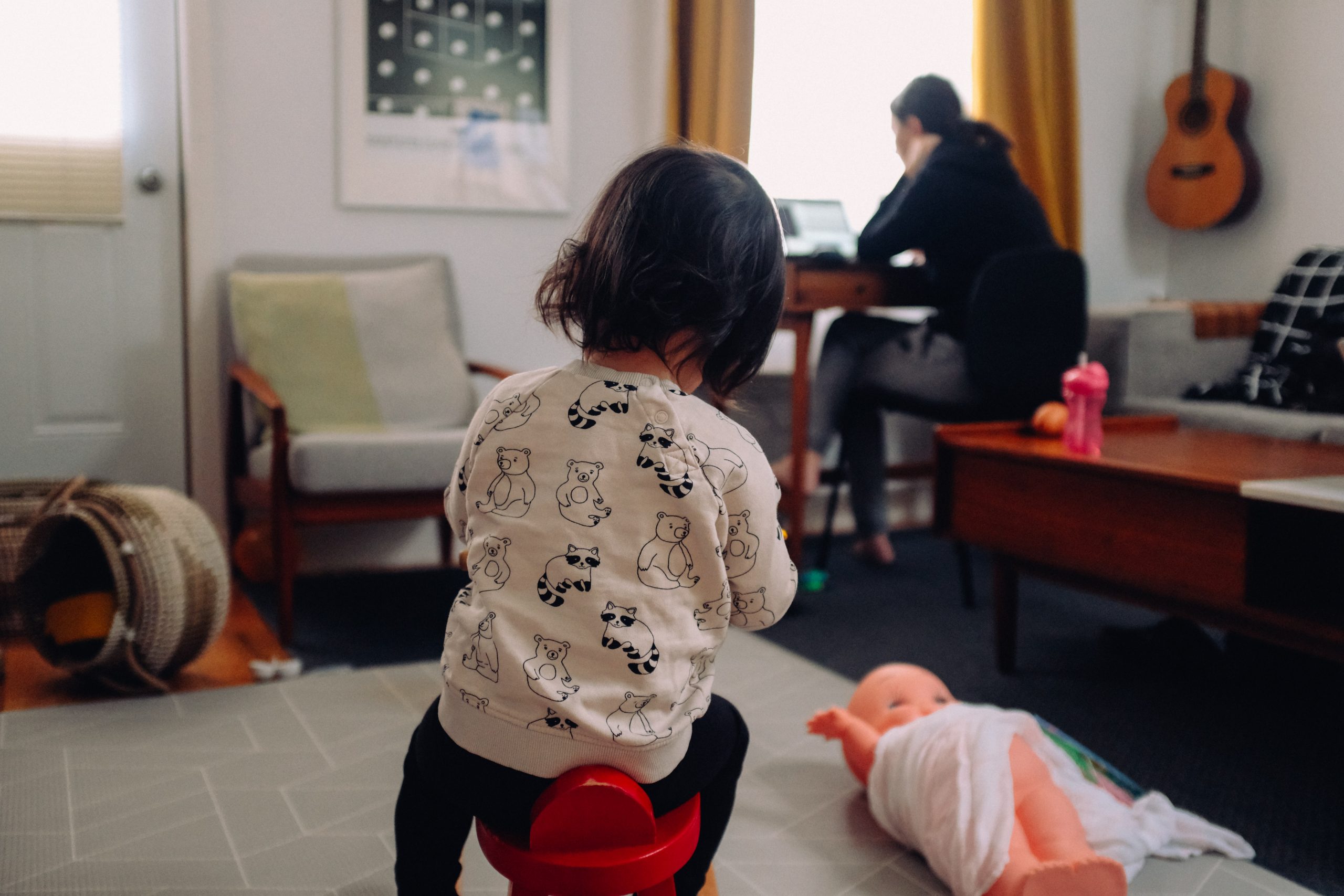This journal article is appearing in a series commissioned by Community Foundations of Canada to accompany the national Vital Signs gender equality reports. The series is being released throughout Fall 2020, and can be accessed here.
It’s midday. My 12-year-old son bounds in the door. I set aside my work researching this article. He has stories to tell from school. He can’t find his raincoat. There is lunch to be made and eaten, clean masks to be located to keep handy in his locker. His needs met, he rushes back to play a bit of outdoor basketball before afternoon classes begin. I somehow try to refocus on my work, setting aside my parent mind.
From March until September, though, my son was here all the time.
I was one of 6.8 million people in Canada (nearly 40% of the workforce) juggling paid work at home with unpaid care work: cooking, cleaning, restocking food and necessities, household management, checking in on friends and family members from afar, taking care of our emotional and physical health. And, if we had children at home, parenting.
The coronavirus pandemic has revealed many things about Canadian society, including that gender inequality persists and that the work of caring for children is central—to everything!
CFC’s national Vital Signs series is focused this year on gender equality. In the context of the pandemic, we need a clear vision of a just recovery for all, and a path to get there, leaving no one behind. Community foundations can play a role in this recovery, and that means understanding the gendered impacts of COVID-19 as well as the importance of care work to our families, communities and economy.
Statistics Canada polling in June 2020 found that parents’ main concern during the pandemic was balancing child care, schooling and work. When (almost) everyone was asked to stay at home, daycares and schools closed, and parents told no one except those already living with them could help out, the pressures on families increased enormously. Parents with only children under 12 seemed to experience the greatest challenge: 80% of them reported feeling “very” or “extremely” concerned about balancing their paid work with caring for children and overseeing their schoolwork. Parents of children with disabilities were more likely than others to name this as a strong concern.
Family stress increased too. StatsCan polls from May 2020 uncovered that Indigenous women were among the most concerned about stresses experienced by their families as a result of the confinement. Nearly half (47%) of Indigenous women surveyed were “very” or “extremely” concerned about this impact, compared to 33% of Indigenous men, 31% of non-Indigenous women, and 25% of non-Indigenous men.
During the pandemic, both men and women took on more child care than they used to. But caring for kids still fell massively to women. Polling in April and June found that, women with children at home reported spending more than twice as many hours on child care than men per week (68 hours vs. 33 hours), even before the pandemic. During confinement, women still reported two times as many hours taking care of their children than men – a tremendous 95 hours vs. 46 hours per week.
And given this situation, “working full-time hours coupled with full-time child care would theoretically allow for just 2.5 hours of sleep per night.“ It is no wonder, then, that employment among women with toddlers or school-aged children fell 7% between February and May and fell by 12% for single mothers. This is compared to a decline of 4% among fathers and 7% of single fathers with school-aged children or younger.
Part of this gender gap may be that families with two parents decided that the one earning more would remain in the workforce. This would usually mean that the man in a heterosexual couple would keep his job – because of the pervasive, persistent, systematic difference in how much men and women earn in Canada and because only 29% of women in dual income families are the primary earners.
Yet, many women did continue to work at home while taking care of children. In fact, women are more likely than men to hold jobs that can be done from home. But even the option to stop working and rely on a partners’ income, or to work from home, is not a privilege available to all women. Households with lower levels of education and earnings are the least likely to hold jobs that can be done from home. Less than 30% of primary earners with a high school diploma can work from home, compared to 66% of their counterparts with a bachelor’s degree or moren. Low income parents seem to have been at greatest risk of being laid off during the pandemic.
Polling by OXFAM Canada revealed that racialized women were twice as likely as white women to stop working because of care responsibilities. COVID-19 has caused 34% of white women, 49% of Indigenous women and 55% of Black women in Canada to experience greater economic challenges due to increased house and care work.
The results show how systemic gender and racial inequality intertwine to leave more of the burden of unpaid but essential care work with women, especially Black, Indigenous and women of colour.
Juggling these responsibilities took its toll on our mental health. Women, gender diverse people and people with kids were more likely in the first months of the pandemic to have anxiety and depression (we are waiting for new results to see how everyone is faring now).
Towards recovery: The crucial role of child care and women’s employment
Not only did increased care work create challenges for women during the first wave of the pandemic, but it’s clear that it is a factor in our communities’ economic recovery. National data shows that “labour underutilization” – when people who could potentially work are not working, or when people could work more hours than they are currently – is now much higher for women than men. The labour underutilization rate was 21% for women in August 2020 compared to only 11% pre-pandemic.
The linkage between employment and child care is easy to understand: From a poll this summer, of parents that said they would send their kids to child care when these services re-opened, 88% said that they required child care in order to work.
Canadian economist Armine Yalnizyan says: “We cannot get recovery without having a ‘she-covery,’ and we cannot have ‘she-covery’ without child care. It is mathematically impossible to have a GDP or jobs recovery without getting more women back to work”

Unfortunately, Canada’s child care systems have long been fragmented and underfunded and staff woefully underpaid. There are signs of hope, though. Child care policy experts from across the country have contributed to the Affordable Child Care for All Plan. In the recent Throne Speech, the government promised “a significant, long-term, sustained investment” to create a national child care system. But it will likely take continued pressure on provincial and federal governments by child care workers and policy advocates to make this long-held dream a reality.
What can community foundations do to support a just recovery?
Seeking out and funding community organizations that support women’s employment is one way. Another is boosting the advocacy voice of child care workers, who may have professional associations to represent them, but which lack resources and capacity to influence public policy. Gender-equity organizations are also important players that hold decision-makers to account on this issue.
The final word from A Feminist Economic Recovery Plan for Canada: Making the Economy Work for Everyone, by YWCA Canada and University of Toronto’s Rotman School of Management:
“Even before this crisis, access to affordable, accessible and high-quality child care was in short supply. The pandemic has shown that child care is an essential service. Without it, the rest of the economy can’t re-start and we risk losing a whole generation of parents, mainly women, from the workforce.”
Juniper Glass is lead researcher and author of the national Vital Signs series on gender equity. She is principal of Lumiere Consulting and member of the Community Engagement Committee of the Foundation of Greater Montreal.




